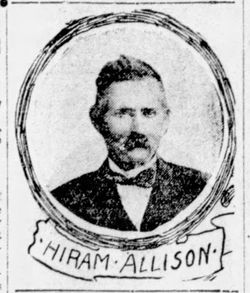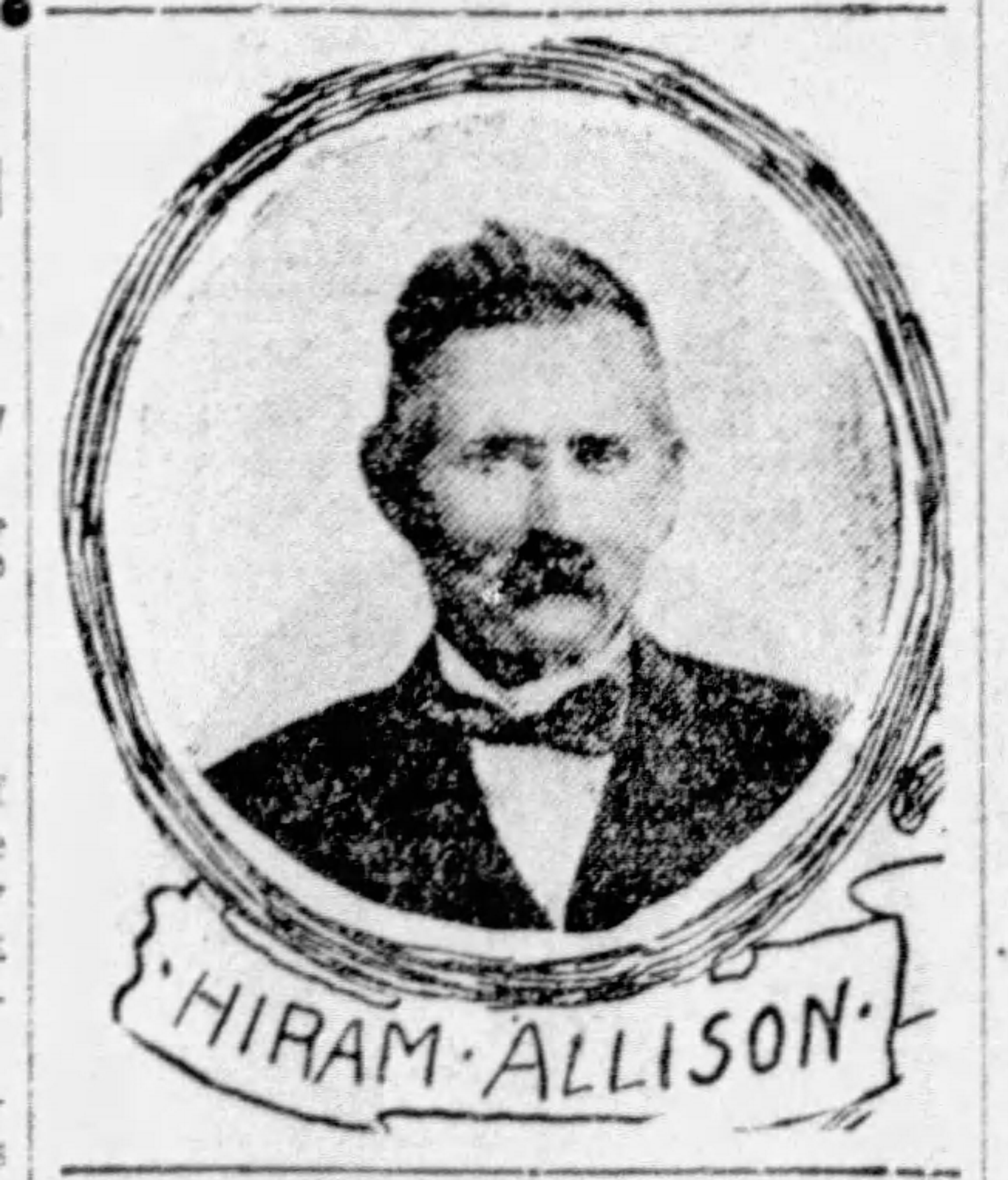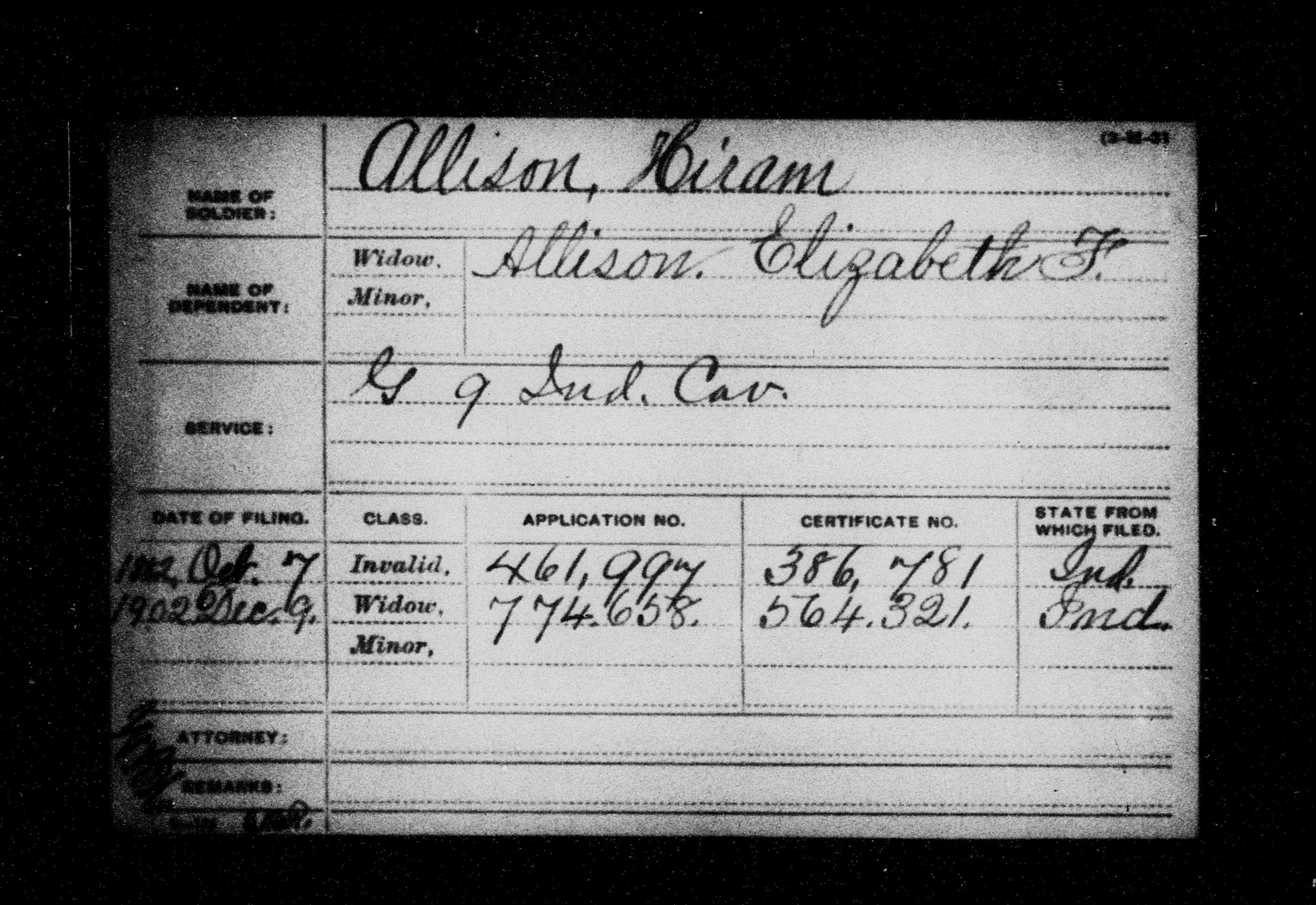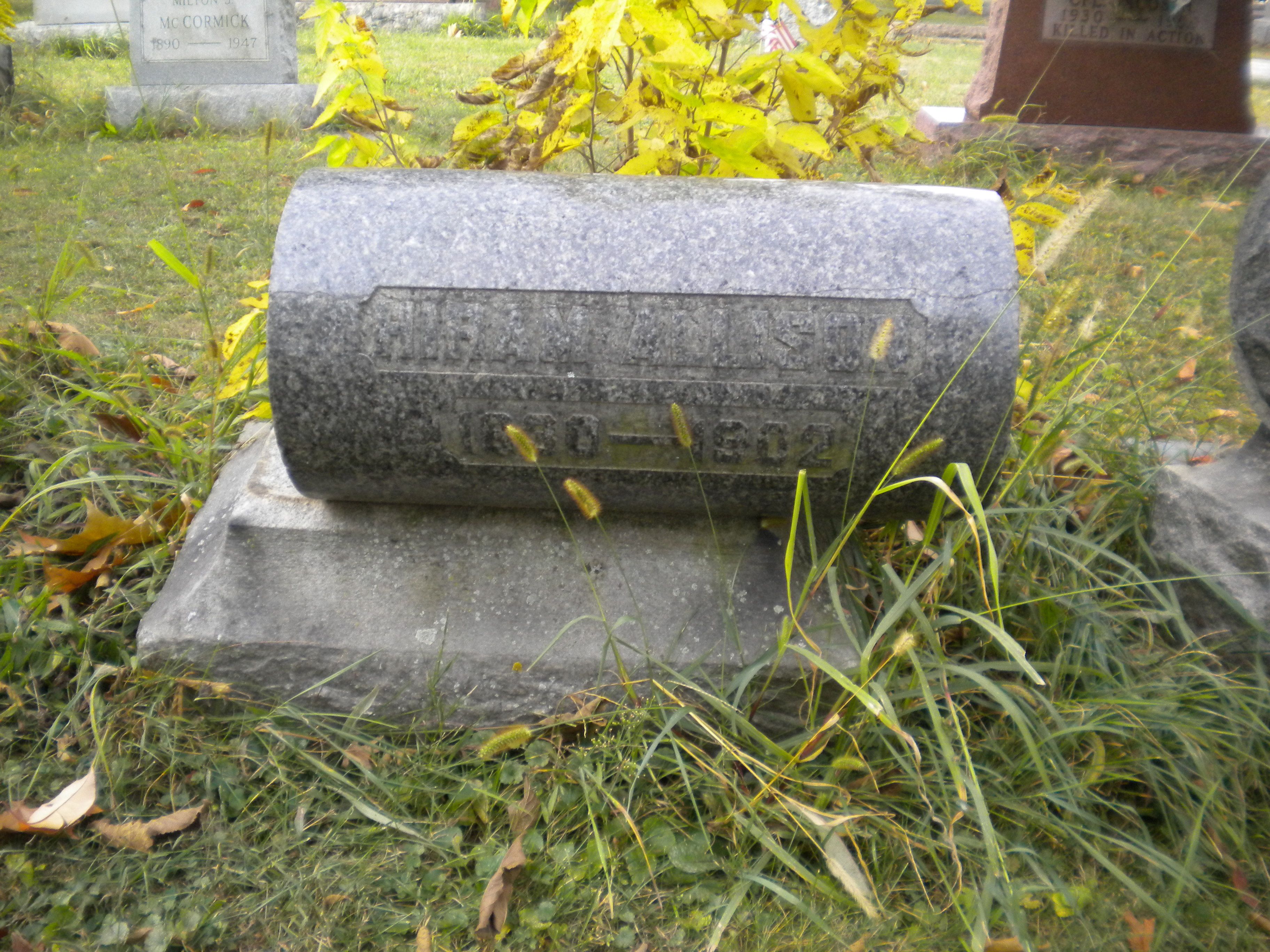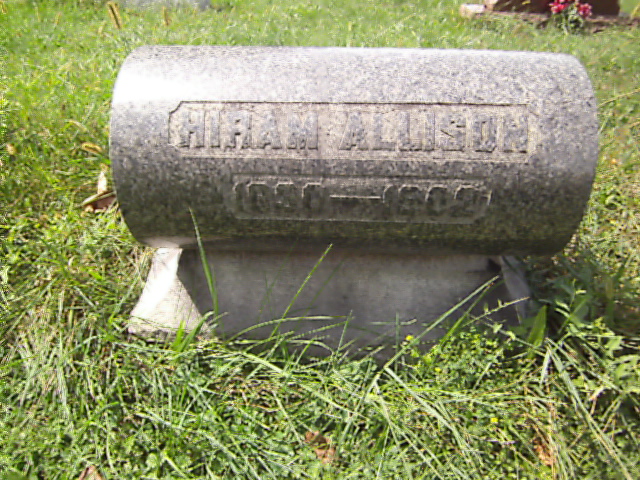The following is from Hazard's History of Henry County, Indiana, 1822-1906, Military Edition, Volume I; published 1904.
HIRAM ALLISON.
SURVIVOR.
This soldier lived in Delaware County, just north of the village of Luray, in Henry County, which was at that time the common centre for the surrounding country. When the 9th Indiana Cavalry was recruited and organized, he enlisted with many others from the neighborhood of Luray, in Company G, and was mustered into the service of the United States, as a private, January 21, 1864. He was a faithful, conscientious soldier and received deserved recognition, while in the service, by being appointed a corporal of his company. He was mustered out of the service June 17, 1865. He was a survivor of the Sultana disaster. When the explosion occurred, he was on the hurricane deck, near the wheel house. When he recovered from the shock of the explosion, he wrenched a piece of timber from its fastening and lowered it into the water, where it was seized by a drowning comrade, and he was obliged to let go. Among the hundreds of struggling men, he fought for pieces of the debris. He finally secured a floating board to which he clung and from which he was rescued some seven miles down the river. After his rescue, he returned to his home in Delaware County, where he continued to reside until his death, November 28, 1902. Mr. Allison was a respected and influential citizen of his community, in the welfare of which he was always interested. His remains are buried in Beech Grove Cemetery. Muncie, Indiana.
Surviving him are his widow, Mrs. Elizabeth Allison, and four children. namely: Mrs. John Parrott, of Albany; Mrs. Alfred Aoleux, of Swissville, Pennsylvania, and Myrtle and Cassius Allison, who lived with their parents.
EXPLOSION OF THE SULTANA.
[The Steamer Sultana] was a regular St. Louis and New Orleans packet, and left the latter port on her fatal trip, April 21, 1865, arriving at Vicksburg, Mississippi, with about two hundred passengers and crew on board. . . [There she received] on board 1,965 Federal soldiers and thirty five officers, just released from the Confederate prisons at Cahaba, Alabama, Macon and Andersonville, Georgia, and belonging to the States of Ohio, Indiana, Michigan, Tennessee and West Virginia. Besides these, there were two companies of infantry, under arms, making a grand total of 2,300 souls on board.
About two o'clock in the morning of the 27th, as the boat was passing through a group of islands known as the "Old Hen and Chickens," and while about opposite Tagleman's Landing, she burst one of her boilcrs and almost immediately caught fire, for the fragments of the boiler had cut the cabin and the hurricane deck in two and the splintered pieces had fallen, many of them, back upon the burning coal fires that were now left exposed. The light, dry wood of the cabins burned like tinder and it was but a short time ere the boat was wrapped in flames, burning to the water's edge and sinking. Hundreds were forced into the water and drowned in squads, those who could swim being unable to free themselves from those who could not and consequently perishing with them.
. . . official investigation showed that ... [t]he boilers of the Sultana had been constructed for the upper Mississippi River trade and had afterwards been put in a boat running on the lower Mississippi to New Orleans. The lower part of the river being muddy caused sediment to sink in the boilers and the boilers became leaky: this added to the fact that the boilers were too light and the vessel loaded to nearly her double capacity, were, in brief, the causes of the explosion. The vessel had been in continuous use and no opportunity given to clean the boilers.
The following is from Hazard's History of Henry County, Indiana, 1822-1906, Military Edition, Volume I; published 1904.
HIRAM ALLISON.
SURVIVOR.
This soldier lived in Delaware County, just north of the village of Luray, in Henry County, which was at that time the common centre for the surrounding country. When the 9th Indiana Cavalry was recruited and organized, he enlisted with many others from the neighborhood of Luray, in Company G, and was mustered into the service of the United States, as a private, January 21, 1864. He was a faithful, conscientious soldier and received deserved recognition, while in the service, by being appointed a corporal of his company. He was mustered out of the service June 17, 1865. He was a survivor of the Sultana disaster. When the explosion occurred, he was on the hurricane deck, near the wheel house. When he recovered from the shock of the explosion, he wrenched a piece of timber from its fastening and lowered it into the water, where it was seized by a drowning comrade, and he was obliged to let go. Among the hundreds of struggling men, he fought for pieces of the debris. He finally secured a floating board to which he clung and from which he was rescued some seven miles down the river. After his rescue, he returned to his home in Delaware County, where he continued to reside until his death, November 28, 1902. Mr. Allison was a respected and influential citizen of his community, in the welfare of which he was always interested. His remains are buried in Beech Grove Cemetery. Muncie, Indiana.
Surviving him are his widow, Mrs. Elizabeth Allison, and four children. namely: Mrs. John Parrott, of Albany; Mrs. Alfred Aoleux, of Swissville, Pennsylvania, and Myrtle and Cassius Allison, who lived with their parents.
EXPLOSION OF THE SULTANA.
[The Steamer Sultana] was a regular St. Louis and New Orleans packet, and left the latter port on her fatal trip, April 21, 1865, arriving at Vicksburg, Mississippi, with about two hundred passengers and crew on board. . . [There she received] on board 1,965 Federal soldiers and thirty five officers, just released from the Confederate prisons at Cahaba, Alabama, Macon and Andersonville, Georgia, and belonging to the States of Ohio, Indiana, Michigan, Tennessee and West Virginia. Besides these, there were two companies of infantry, under arms, making a grand total of 2,300 souls on board.
About two o'clock in the morning of the 27th, as the boat was passing through a group of islands known as the "Old Hen and Chickens," and while about opposite Tagleman's Landing, she burst one of her boilcrs and almost immediately caught fire, for the fragments of the boiler had cut the cabin and the hurricane deck in two and the splintered pieces had fallen, many of them, back upon the burning coal fires that were now left exposed. The light, dry wood of the cabins burned like tinder and it was but a short time ere the boat was wrapped in flames, burning to the water's edge and sinking. Hundreds were forced into the water and drowned in squads, those who could swim being unable to free themselves from those who could not and consequently perishing with them.
. . . official investigation showed that ... [t]he boilers of the Sultana had been constructed for the upper Mississippi River trade and had afterwards been put in a boat running on the lower Mississippi to New Orleans. The lower part of the river being muddy caused sediment to sink in the boilers and the boilers became leaky: this added to the fact that the boilers were too light and the vessel loaded to nearly her double capacity, were, in brief, the causes of the explosion. The vessel had been in continuous use and no opportunity given to clean the boilers.
Family Members
Sponsored by Ancestry
Advertisement
Records on Ancestry
Advertisement
